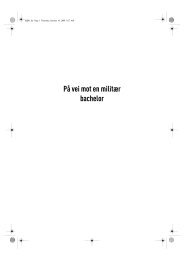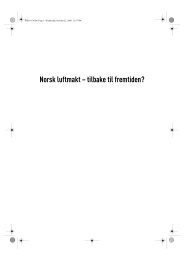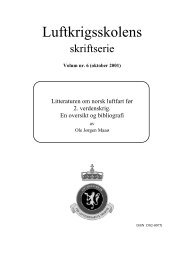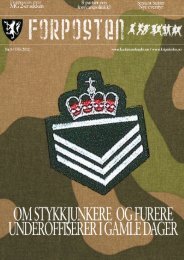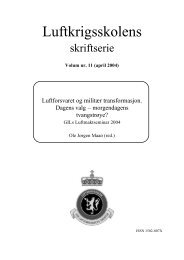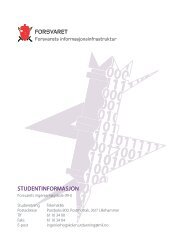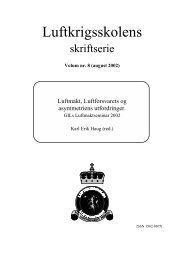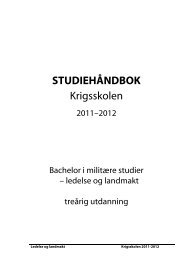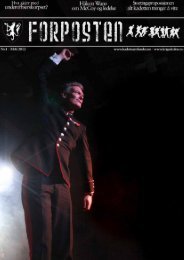Wilhelm Mohr
Wilhelm Mohr
Wilhelm Mohr
Create successful ePaper yourself
Turn your PDF publications into a flip-book with our unique Google optimized e-Paper software.
PART I – The Contribution of the Norwegian Air Forces<br />
The birth of the 2 Norwegian Fighter Squadrons<br />
By spring 1941 the training in Canada of pilots and ground crew had<br />
reached the stage that a first fighter squadron could be transferred and<br />
stationed in the United Kingdom. On 21 July 1941 331 Squadron was<br />
established at RAF Station Catterick under 12 Group, Fighter Command.<br />
In September of the same year another contingent of ground crew<br />
was transferred, which together with pilots, some of whom had already<br />
seen service in Fighter Command, made up the second squadron. This<br />
became 332 (N) Squadron, established on 21 January 1942 also at Catterick.<br />
Before 332 arrived, 331 had been moved first to the northern base<br />
of Castletown (North Scotland) and then to Skeabrae (Orkneys). On<br />
4 May 1942 it was transferred south to RAF Station North Weald, by<br />
Epping, under 11 Group of Fighter Command. On 19 June 332 followed,<br />
and for the rest of the war the two Norwegian squadrons operated<br />
together.<br />
331 Squadron in the North<br />
331 (N) Squadron was equipped at the outset with Hawker Hurricane<br />
Mark I and shortly after obtained Mark II B. It became operational<br />
while at Castletown (North Scotland) on 10 September with the primary<br />
task of providing air defence for the naval base at Scapa Flow.<br />
It also offered general convoy protection in adjacent coastal waters.<br />
To accommodate this task better the squadron was soon moved to<br />
Skeabrae – a «difficult» and harsh airfield where single engine operations<br />
were made more difficult by the darkness during winter and the<br />
frequent strong winds and icing conditions. Clouds unfortunately often<br />
let the enemy hide before intercepts could be accomplished. To improve<br />
coverage the squadron used to hold detachments at Sumburgh Head<br />
(Shetlands), Dyce and Peterhead (North Scotland).<br />
In November 1941 Spitfire II A’s replaced the Hurricanes and, as the<br />
serviceability of the squadron’s aircraft had proved to be high, these<br />
were again changed for factory-new Spitfire VB’s with 20 mm can-<br />
51



